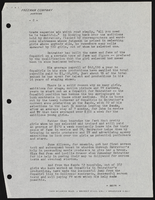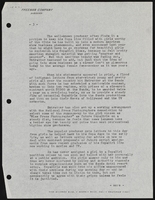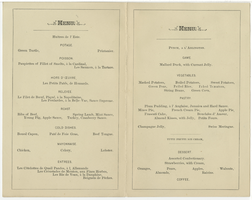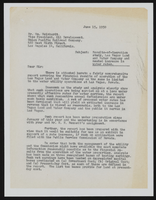Search the Special Collections and Archives Portal
Search Results
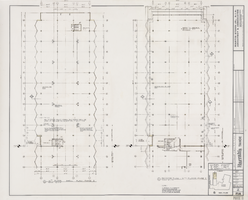
Architectural drawing of Harrah's Tahoe (Stateline, Nev.), phase II, skyroom and 16th floor plan, March 28, 1973
Date
Archival Collection
Description
Architectural plans for the expansion of the tower of Harrah's Tahoe. Phase II of 16th floor shell plan and 18th floor skyroom plan. Original material: mylar. Scale: 1/8 inch = 1 foot. Includes key plan. Drawn by: Pete. Job captain: W.P. Checked by: M.T. Berton Charles Severson, architect; Brian Walter Webb, architect.
Site Name: Harrah's Tahoe
Address: 15 Highway 50
Image

Architectural drawing of Harrah's Tahoe (Stateline, Nev.), phase II, typical 4th thru 15th and 17th floor plans, March 28, 1973
Date
Archival Collection
Description
Architectural plans for the expansion of the tower of Harrah's Tahoe. Original material: mylar. Includes key plan. Drawn by: R.C. Job captain: A.Q. Checked by: J.R. Berton Charles Severson, architect; Brian Walter Webb, architect.
Site Name: Harrah's Tahoe
Address: 15 Highway 50
Image
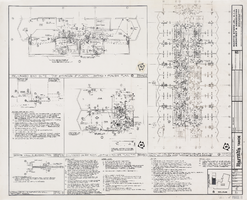
Architectural drawing of Harrah's Tahoe (Stateline, Nev.), phase II, typical guest room floor plan and detail, March 28, 1973
Date
Archival Collection
Description
Architectural plans for the expansion of the tower of Harrah's Tahoe. Includes lighting and power plan. Original material: mylar. Drawn by: R.J. Job captain: W.L. Berton Charles Severson, architect; Brian Walter Webb, architect.
Site Name: Harrah's Tahoe
Address: 15 Highway 50
Image
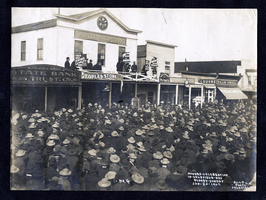
Photograph of a crowd attending a Miners Union event on 2nd Anniversary of Bloody Sunday Massacre in Russia, Goldfield (Nev.), January 20, 1907
Date
Archival Collection
Description
Caption: Miners-celebration in-Goldfield-Nev Bloody-Sunday Jan-20-1907
Site Name: Miners Union Hall (Goldfield, Nev.)
State Bank and Trust Company (Goldfield, Nev.)
Palm Grill (Goldfield, Nev.)
Image
Gutiérrez, José Luis, 1941-
José Luis Gutiérrez is a self-made entrepreneur and icon in Las Vegas, Nevada, who immigrated at a young age from his hometown in Guadalajara, Jalisco, Mexico. José’s childhood memories are filled with nostalgic and loving stories from being raised by his grandmother to working at his uncle’s mechanic shop from a young age. José remembers his childhood as a tough one since he had to start working early in life and did not get to finish high school even, but he relates how his mother always motivated him to do big things in life.
Person

Photograph of Heidi Hamilton, Mark Morgan, and Eileen Price-Kim rehearsing the ballet "Songs of Farewell," Nevada Dance Theatre, Las Vegas, Nevada, 1970s
Date
Archival Collection
Description
Show Name: Songs of farewell (ballet)
Image

